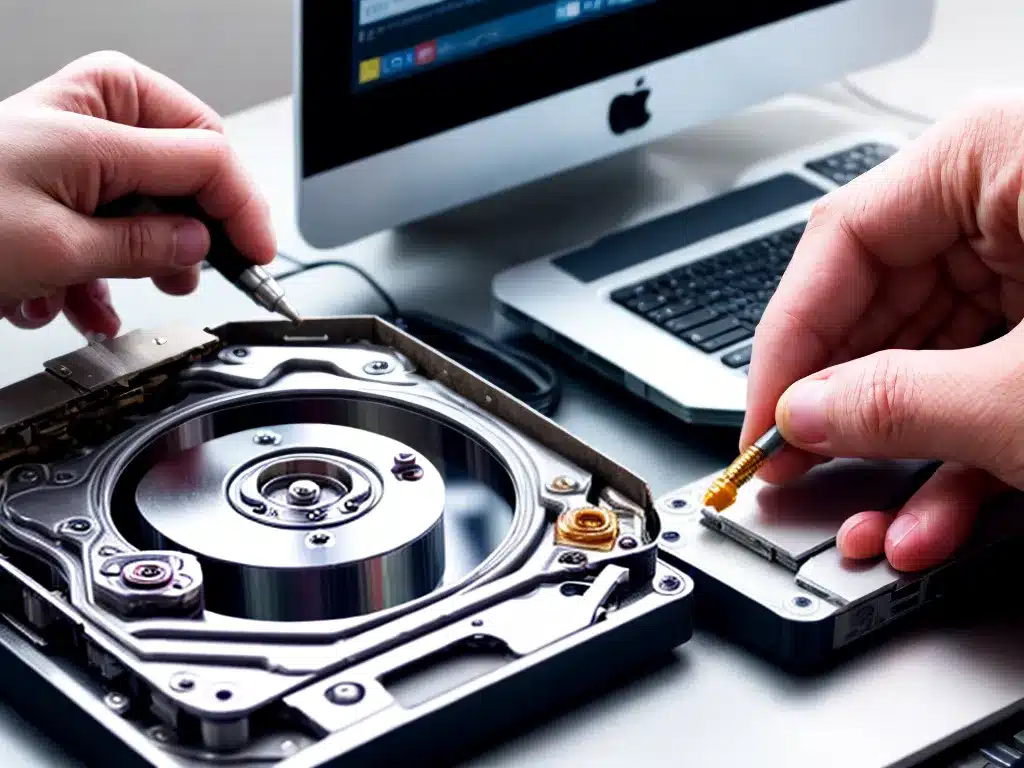
Back Up Your Data Regularly
Backing up your data is the best way to avoid needing data recovery in the first place. I recommend making backups of all your important files at least once a week. There are many easy-to-use backup software options available, both free and paid. I personally use an automated cloud backup service that runs in the background and uploads my files to the cloud. This gives me peace of mind knowing my files are safely stored offsite.
Know Your Data Recovery Options
If you do suffer data loss, it’s important to know what data recovery options are available. Here are the main ones:
-
Software recovery tools: These programs scan your storage device and find deleted files that can often be restored. They work best for recovering files you accidentally deleted.
-
Professional data recovery services: For more serious data loss from hardware failure or corruption, a pro service may be able to recover your data in a lab environment. This costs hundreds to thousands of dollars.
-
DIY recovery: Attempting DIY recovery from a failing drive risks further data loss. Only try this if you can’t afford a pro service.
Act Fast After Data Loss
Time is critical when attempting data recovery. As soon as you realize files are lost:
-
Stop using the device: Continued use risks overwriting deleted data.
-
Remove the storage device: If an external drive, detach it from the computer.
-
Avoid DIY recovery: Don’t run recovery software or try opening, copying, moving or editing files.
Getting professional help ASAP gives the best chance of recovering your data.
Pay Attention to Signs of Hard Drive Failure
Knowing the signs of a failing hard drive can prevent catastrophic data loss. Watch for:
-
Unusual noises from the drive, like grinding or clicking
-
Frequent freeze-ups, crashes and slow performance
-
Failure to boot up properly
-
Disappearing files and folders
-
Frequent error messages
At the first signs of failure, stop using the drive and get professional data recovery assistance immediately. Don’t wait until total failure.
Keep Good Records of Lost Files
Information about your lost files can increase the chances of successful data recovery. Make notes on:
-
The folder locations and directory structure
-
Filenames, extensions and permissions
-
Original storage device model, size and format
-
Missing file types, sizes and dates modified
Providing detailed file info to the recovery technician can help reconstruct your lost data.
Understand Data Overwrite Situations
When deleted files are overwritten with new data, recovery becomes difficult or impossible. Overwriting can happen when:
-
You continue using a device after data loss. Any new data could overwrite deleted files.
-
You reinitialize or reformat a device. This erases all existing data.
-
You reset your operating system. A full system reset overwrites system-related files.
-
You save new data to the device. Even a small amount of new data can ruin recovery chances.
Avoid these actions after data loss to maximize recoverability.
Choose a Reputable Data Recovery Service
Not all data recovery companies are the same. When evaluating providers:
-
Check experience and specialty. Look for years of experience specifically with your type of data loss.
-
Ask about recovery process and capabilities. Recoverability rates and technology capabilities vary.
-
Review security protocols. Ensure they can recover data without compromising privacy.
-
Compare prices. Weigh costs vs. probability of successful recovery for your specific case.
-
Check certifications and reviews. Choose an established provider known for high success rates.
Vet providers thoroughly – your data is in their hands. With the right service, recovery is often possible.
Have Realistic Expectations on Recovery Success
Data recovery is an imperfect process. Manage your expectations based on:
-
Type of data loss: Logical failures have higher recovery rates than physical ones.
-
Extent of damage: Severe physical damage reduces recoverability.
-
Type of storage device: SSDs are harder to recover from than hard disk drives.
-
Time elapsed since data loss: Fast action is key for recovery success.
-
Overwrite situation: Recovery is impossible if new data has overwritten lost files.
Understand that 100% recovery may not be possible, but salvaging some data is often achievable.
Learn From the Experience
If you undergo data recovery, use the experience to improve your future data security:
-
Identify what caused the data loss and take steps to prevent recurrence.
-
Implement better backups to limit reliance on recovery services.
-
Have a recovery plan for different types of data loss scenarios.
-
Regularly duplicate backups and store them offsite.
-
Educate employees on data care and prevention of human errors.
-
Know your options in case you ever again need data recovery.
Let a recovery experience be a lesson for strengthening your data protection. Thorough preparation is the key to avoiding large-scale data disasters.












